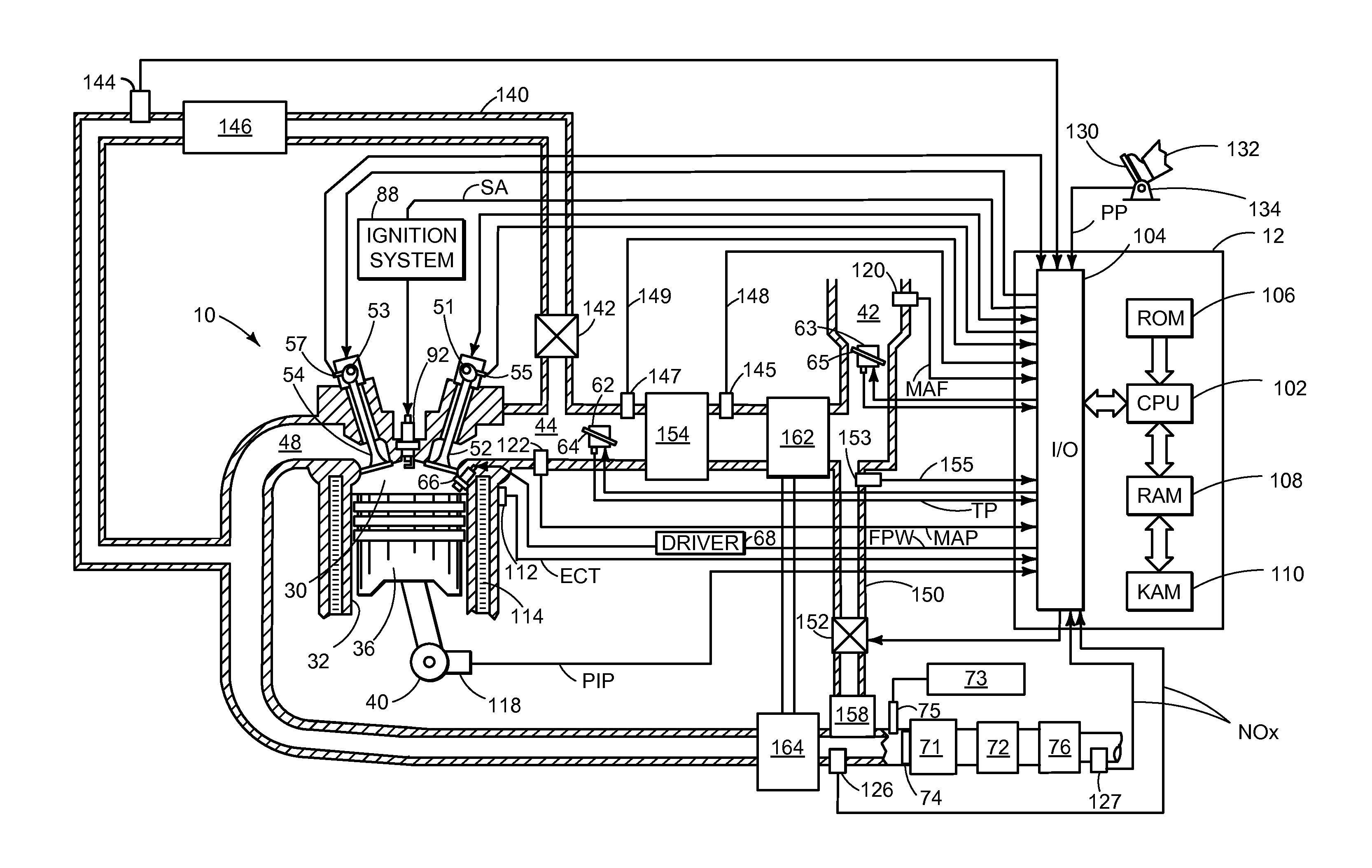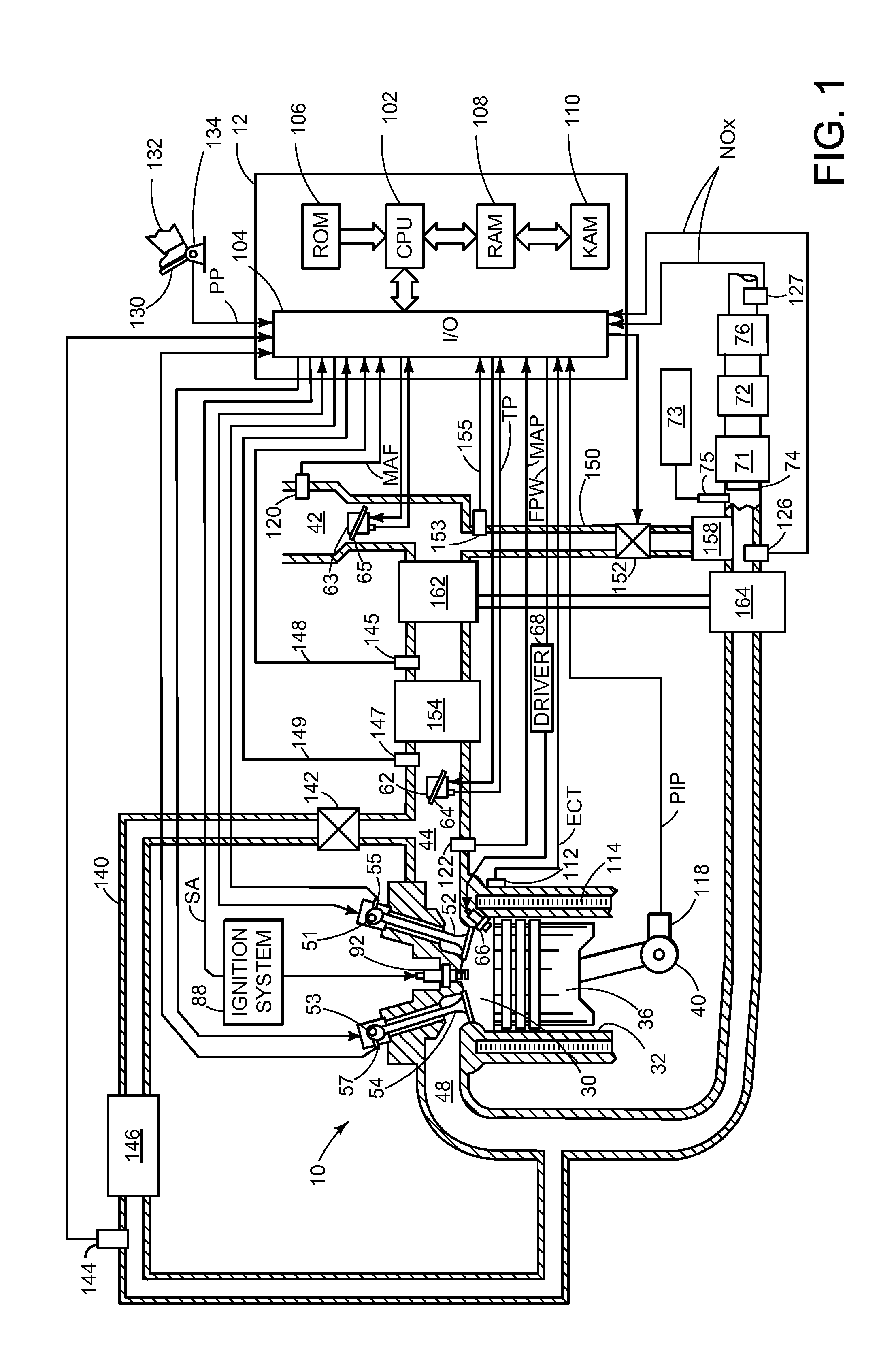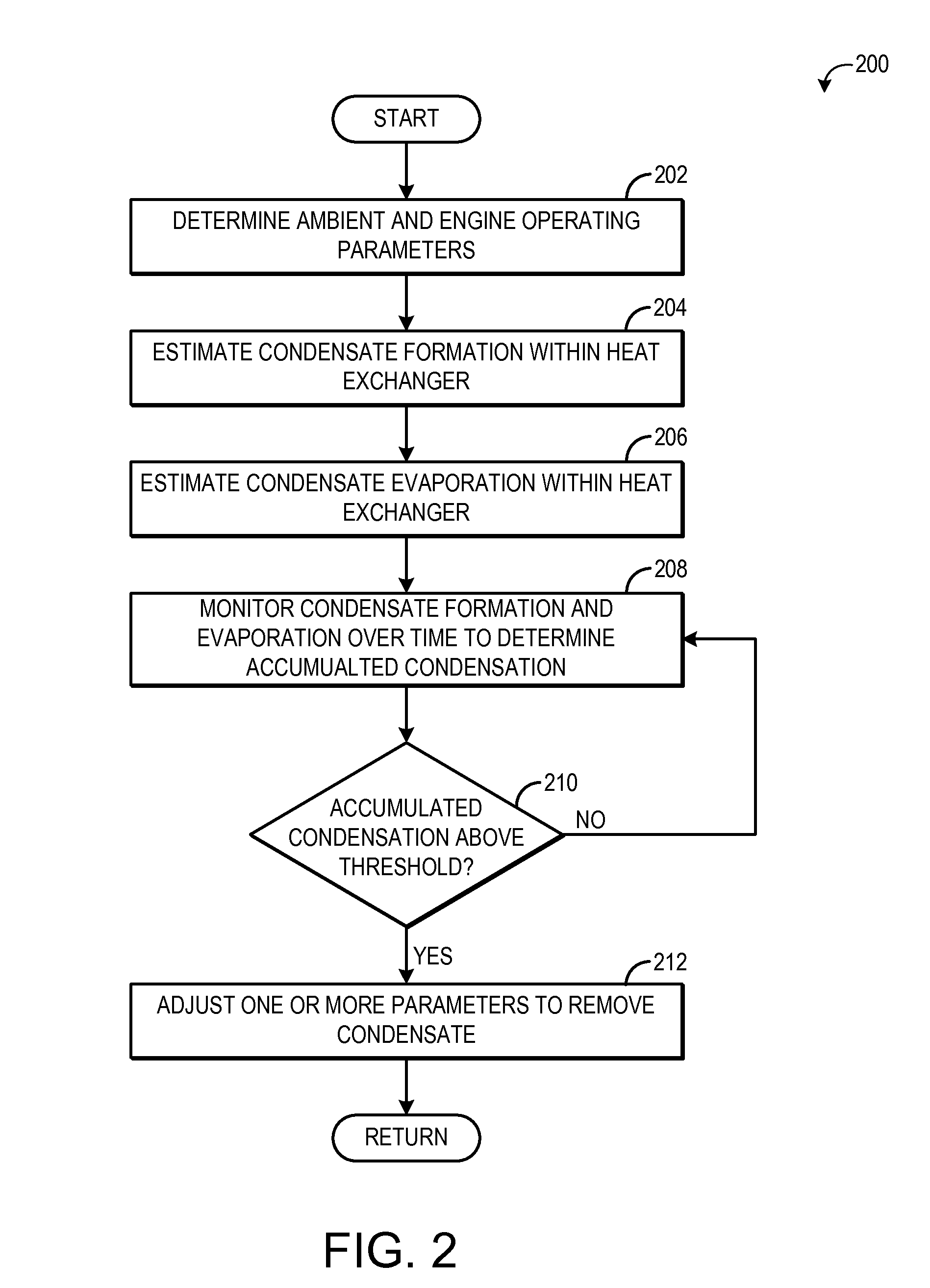Condensate accumulation model for an engine heat exchanger
a heat exchanger and condensate accumulation technology, applied in the direction of machines/engines, combustion-air/fuel-air treatment, electric control, etc., can solve the problems of reducing the efficiency of the heat exchanger over time, affecting so as to improve the efficiency of the heat exchanger and reduce the cost of bypass lines , the effect of increasing the density
- Summary
- Abstract
- Description
- Claims
- Application Information
AI Technical Summary
Benefits of technology
Problems solved by technology
Method used
Image
Examples
Embodiment Construction
[0013]Engine heat exchangers, such as EGR coolers and charge air coolers, may accumulate condensate under some conditions. The accumulated condensate may be swept to the engine, where if it is present in large amounts, may cause misfire and other combustion issues or component damage. In order to prevent the accumulation of condensate within an engine heat exchanger, the amount of formed and evaporated condensate within the heat exchanger may be tracked using a condensation model. The condensation model may output formed and evaporated condensate based on speed and load dependent operating parameters, such as EGR rate, boost pressure, and mass air flow. If the condensate in the heat exchanger accumulates to a threshold level, an engine actuator may be adjusted to remove the condensate from the heat exchanger. FIG. 1 illustrates an engine including multiple heat exchangers and a controller configured to execute the methods illustrated in FIGS. 2-5.
[0014]Referring now to FIG. 1, it sh...
PUM
 Login to View More
Login to View More Abstract
Description
Claims
Application Information
 Login to View More
Login to View More - R&D
- Intellectual Property
- Life Sciences
- Materials
- Tech Scout
- Unparalleled Data Quality
- Higher Quality Content
- 60% Fewer Hallucinations
Browse by: Latest US Patents, China's latest patents, Technical Efficacy Thesaurus, Application Domain, Technology Topic, Popular Technical Reports.
© 2025 PatSnap. All rights reserved.Legal|Privacy policy|Modern Slavery Act Transparency Statement|Sitemap|About US| Contact US: help@patsnap.com



